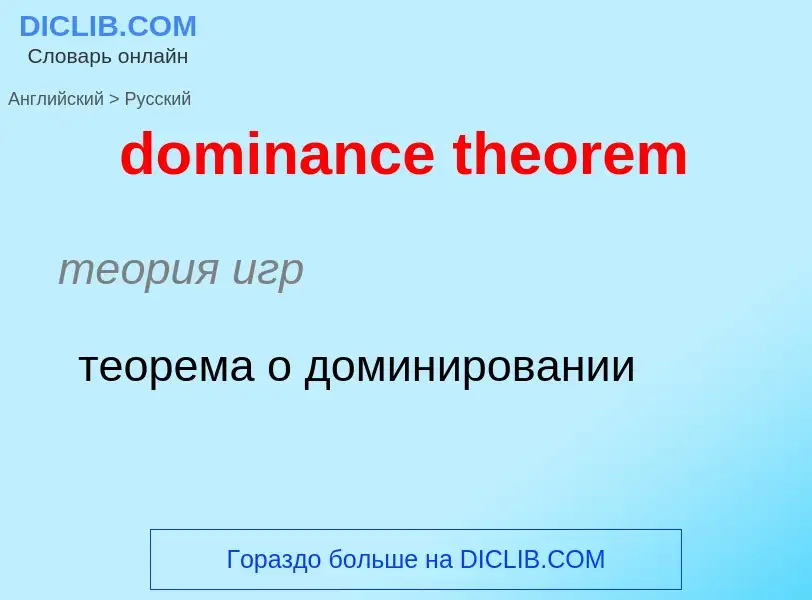Перевод и анализ слов искусственным интеллектом ChatGPT
На этой странице Вы можете получить подробный анализ слова или словосочетания, произведенный с помощью лучшей на сегодняшний день технологии искусственного интеллекта:
- как употребляется слово
- частота употребления
- используется оно чаще в устной или письменной речи
- варианты перевода слова
- примеры употребления (несколько фраз с переводом)
- этимология
dominance theorem - перевод на русский
теория игр
теорема о доминировании
математика
теорема о дивергенции
теорема Гаусса-Остроградского
Определение
Википедия
Stochastic dominance is a partial order between random variables. It is a form of stochastic ordering. The concept arises in decision theory and decision analysis in situations where one gamble (a probability distribution over possible outcomes, also known as prospects) can be ranked as superior to another gamble for a broad class of decision-makers. It is based on shared preferences regarding sets of possible outcomes and their associated probabilities. Only limited knowledge of preferences is required for determining dominance. Risk aversion is a factor only in second order stochastic dominance.
Stochastic dominance does not give a total order, but rather only a partial order: for some pairs of gambles, neither one stochastically dominates the other, since different members of the broad class of decision-makers will differ regarding which gamble is preferable without them generally being considered to be equally attractive.
Throughout the article, stand for probability distributions on , while stand for particular random variables on . The notation means that has distribution .
There are a sequence of stochastic dominance orderings, from first , to second , to higher orders . The sequence is increasingly more inclusive. That is, if , then for all . Further, there exists such that but not .
Stochastic dominance could trace back to (Blackwell, 1953), but it was not developed until 1969–1970.





